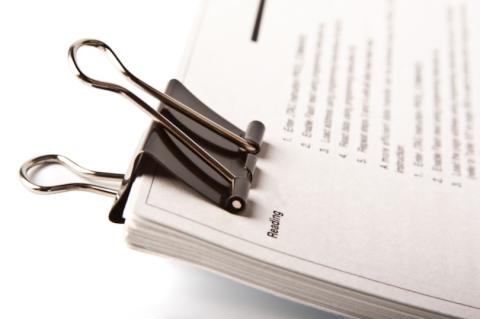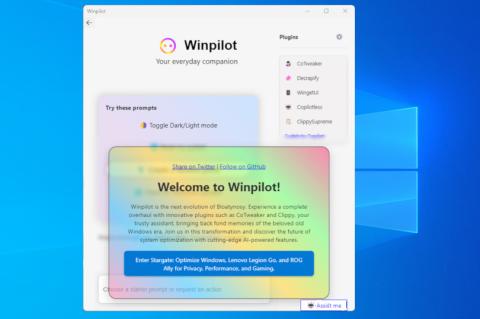Die F-Serie beschäftigt sich mit Nicht-Telephon-Telekommunikationsdiensten.
Telegraph service
Operating methods for the international public telegram service
F.1
Operational provisions for the international public telegram service
F.2
Operational provisions for the collection of telegram charges Published as F.42 (11/88), then renumbered as F.2
F.4
Plain and secret language
F.10
Character error rate objective for telegraph communication using 5-unit start-stop equipment
F.11
Continued availability of traditional services
F.12
[Withdrawn] Major degradation or disruption of service
F.13
[Withdrawn] Operational provisions for participation in the transferred account telegraph and telematic service
F.14
General provisions for one-stop-shopping arrangements
F.15
Evaluating the success of new services
F.16
Global virtual network service
F.17
Operational aspects of service telecommunications
F.18
Guidelines on harmonization of international public bureau services
F.19
Collection and dissemination of official service information
The gentex network
F.20
The international gentex service
F.21
Composition of answer-back codes for the international gentex service
F.23
Grade of service for long-distance international gentex circuits
F.24
Average grade of service from country to country in the gentex service
Message switching
F.30
Use of various sequences of combinations for special purposes
F.31
Telegram retransmission system
F.32
Telegram destination indicators Formerly F.96
F.35
Provisions applying to the operation of an international public automatic message switching service for equipments utilizing the international telegraph Alphabet No. 2
The international telemessage service
F.40
International public telemessage service
F.41
Interworking between the telemessage service and the international public telegram service
The international telex service
F.59
General characteristics of the international telex service
F.60
Operational provisions for the international telex service
F.61
Operational provisions relating to the chargeable duration of a telex call
F.63
Additional facilities in the international telex service
F.64
Determination of the number of international telex circuits required to carry a given volume of traffic
F.65
Time-to-answer by operators at international telex positions
F.68
Establishment of the automatic intercontinental telex network
F.69
The international telex service - Service and operational provisions of telex destination codes and telex network identification codes
F.70
Evaluating the quality of the international telex service
F.71
Interconnection of private teleprinter networks with the telex network
F.72
The international telex service - general principles and operational aspects of a store and forward facility
F.73
Operational principles for communication between terminals of the international telex service and data terminal equipment on packet-switched public data networks Corr. 12/90
F.74
Intermediate storage devices accessed from the international telex service using single stage selection - Answerback format
F.80
Basic requirements for interworking relations between the international telex service and other services
F.82
Operational provisions to permit interworking between the international telex service and the intex service
F.83
Operational principles for communication between terminals of the international telex service and data terminal equipment on packet-switched public data networks
Published as F.73, then renumbered as F.83. A Corrigendum was indicated in 12/1990.
F.85
Intercommunication between the IPM service and the telex service
F.86
Interworking between the international telex service and the videotex service
F.87
Operational principles for the transfer of messages from terminals on the telex network to Group 3 facsimile terminals connected to the public switched telephone network
F.89
Status enquiry function in the international telex service
Statistics and publications on international telegraph services
Scheduled and leased communication services
F.100
Scheduled radiocommunication service
F.104
International leased circuit services - customer circuit designations
Phototelegraph service
F.105
Operational provisions for phototelegrams Published as F.80 (11/88), then renumbered as F.105
F.106
Operational provisions for private phototelegraph calls Published as F.80 bis (11/88), then renumbered as F.106
F.107
Rules for phototelegraph calls established over circuits normally used for telephone traffic Published as F.82 (11/88), then renumbered as F.107.
F.108
Operating rules for international phototelegraph calls to multiple destinations Published as F.85 (11/88), then renumbered as F.108
Mobile service
Mobile services and multidestination satellite services
F.110
Operational provisions for the maritime mobile service
F.111
Principles of service for mobile systems
F.112
Quality objectives for 50-baud start-stop telegraph transmission in the maritime mobile-satellite service
F.113
Service provisions for aeronautical passenger communications supported by mobile-satellite systems
F.115
Service objectives and principles for future public land mobile telecommunication systems
F.116
Service features and operational provisions in IMT-2000
F.120
Ship station identification for VHF/UHF and maritime mobile-satellite services
F.122
Operational procedures for the maritime satellite data transmission service
F.125
Numbering plan for access to the mobile-satellite services of INMARSAT from the international telex service
F.127
Operational procedures for interworking between the telex service and the service offered by INMARSAT standard-C system
F.130
Maritime answer-back codes
F.131
Radiotelex service codes
F.140
Point-to-multipoint telecommunication service via satellite
F.141
International two-way multipoint telecommunication service via satellite
F.150
Service and operational provision for the intex service
Telematic services
Public facsimile service
F.160
[Withdrawn] General operational provisions for the international public facsimile services
Deleted as a result of liberalisation in the telecommunications environment resulting in the removal of international regulated services
F.162
Service and operational requirements of store-and-forward facsimile service
F.163
Operational requirements of the interconnection of facsimile store-and-forward units
F.166
[Withdrawn] Service and operational requirements for a fax database service (FaxDB)
Deleted as there are no plans for the introduction of a service of this nature
F.170
Operational provisions for the international public facsimile service between public bureaux (bureaufax)
F.171
Operational provisions relating to the use of store-and-forward switching nodes within the bureaufax service
F.180
[Withdrawn] General operational provisions for the international public facsimile service between subscribers' terminals (Telefax)
Deleted as a result of liberalisation in the telecommunications environment resulting in the removal of international regulated services
F.182
[Withdrawn] Operational provisions for the international public facsimile service between subscribers with Group 3 facsimile terminals (Telefax 3)
Deleted as a result of liberalisation in the telecommunications environment resulting in the removal of international regulated services
F.182 bis
Guidelines for the support of the communication of documents using Group 3 facsimile between user terminals via public networks
F.184
[Withdrawn] Operational provisions for the international public facsimile service between subscriber stations with group 4 facsimile terminals (Telefax 4)
Deleted as a result of liberalisation in the telecommunications environment resulting in the removal of international regulated services
F.185
Internet facsimile: Guidelines for the support of the communication of facsimile documents
F.190
Operational provisions for the international facsimile service between public bureaux and subscriber stations and vice versa (bureaufax - telefax and vice versa)
Teletex service
F.201
[Withdrawn] Interworking between teletex service and telex service - General principles
Deleted as a consequence of the suppression of Teletex service
F.202
[Withdrawn] Interworking between the telex service and the teletex service - General procedures and operational requirements for the international interconnection of telex/teletex conversion facilities
Deleted as a consequence of the suppression of Teletex service
F.203
[Withdrawn] Network based storage for the teletex service
Deleted as a consequence of the suppression of Teletex service
F.220
[Withdrawn] Service requirements unique to the processable mode number eleven (PM11) used within the teletex service
Deleted as a consequence of the suppression of Teletex service
F.230
[Withdrawn] Service requirements unique to the mixed mode (MM) used within the teletex service
Deleted as a consequence of the suppression of Teletex service
Videotex service
F.300
Videotex service
F.301
Fast speed PSTN videotex
General provisions for telematic services
F.350
Application of Series T Recommendations
F.351
General principles on the presentation of terminal identification to users of the telematic services
F.353
Provision of telematic and data transmission services on integrated services digital network (ISDN)
Message handling services
F.400/X.400
Message handling system and service overview
F.401
Naming and addressing for public message handling services
F.410
The public message transfer service
F.415
Intercommunication with public physical delivery services Erratum in F.410 (08/92)
F.420
The public interpersonal messaging service
F.421
Intercommunication between the IPM service and the telex service
F.423
Intercommunication between the interpersonal messaging service and the telefax service
F.435
Electronic data interchange messaging service
F.440
The voice messaging service
F.471
Operational requirements for the interconnection of voice-mail store-and-forward units
F.472
Service and operational requirements of the voice-mail store-and-forward service
Directory services
F.500
International public directory services
F.510
Automated directory assistance - White pages service definition
F.515
Unified Directory Specification
Document communication
F.551
[Withdrawn] Service Recommendation for the telematic file transfer within telefax 3, telefax 4, teletex services and message handling services
Programming communication interfaces
F.581
Guidelines for programming communication interfaces (PCIs) definition: service Recommendation
Data transmission services
F.600
Service and operational principles for public data transmission services
Audiovisual and multimedia services
F.700
Framework Recommendation for multimedia services
F.701
Guideline Recommendation for identifying multimedia service requirements
F.702
Multimedia conference services
F.703
Multimedia conversational services
F.710
[Withdrawn] General principles for audiographic conference service
The content of this Recommendation is superseded by ITU-T F.702 on multimedia
F.711
[Withdrawn] Audiographic conference teleservice for ISDN
The content of this Recommendation is superseded by ITU-T F.731 on multimedia
F.720
Videotelephony services - General
F.721
Videotelephony teleservice for ISDN
F.723
Videophone service in the Public Switched Telephone Network (PSTN)
F.724
Service description and requirements for videotelephony services over IP networks
F.730
[Withdrawn] Videoconference service - General
The content of this Recommendation is superseded by ITU-T F.702 on multimedia
F.731
Multimedia Conference Services in the ISDN
F.732
Multimedia conference services in the B-ISDN
F.733
Service description and requirements for multimedia conference services over IP networks
F.740
Audiovisual interactive services
F.741
Service description and requirements for audiovisual on-demand services
F.742
Service description and requirements for distance learning services
F.750
Metadata framework
F.761
Service-oriented requirements for telewriting applications
ISDN services
F.811
Broadband connection-oriented bearer service
F.812
Broadband connectionless data bearer service
F.813
Virtual path service for reserved and permanent communications
Universal personal telecommunication
F.850
Principles of universal personal telecommunication (UPT)
F.851
Universal Personal Telecommunication (UPT) - Service description (service set 1)
F.852
Universal personal telecommunication (UPT) - Service description (service set 2)
F.853
Supplementary services in the Universal Personal Telecommunication (UPT) environment
Human factors
F.901
Usability evaluation of telecommunication services
F.902
Interactive services design guidelines
F.910
Procedures for designing, evaluating and selecting symbols, pictograms and icons.
Supplements to the Series F Recommendations
Suppl. 1
Definitions relating to telegraph, telematic and data transmission services
Suppl. 2
Terms and definitions for telex
Suppl. 3
[Withdrawn] Outline description of the INMARSAT standard-c system and the services it may support


